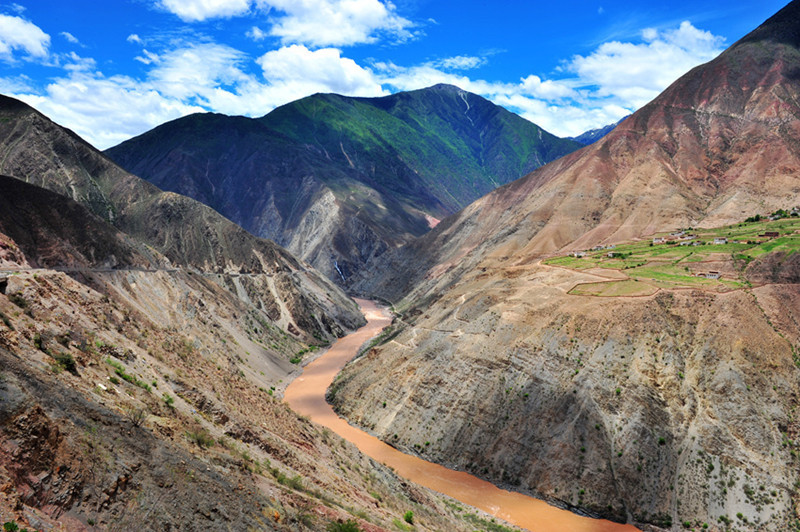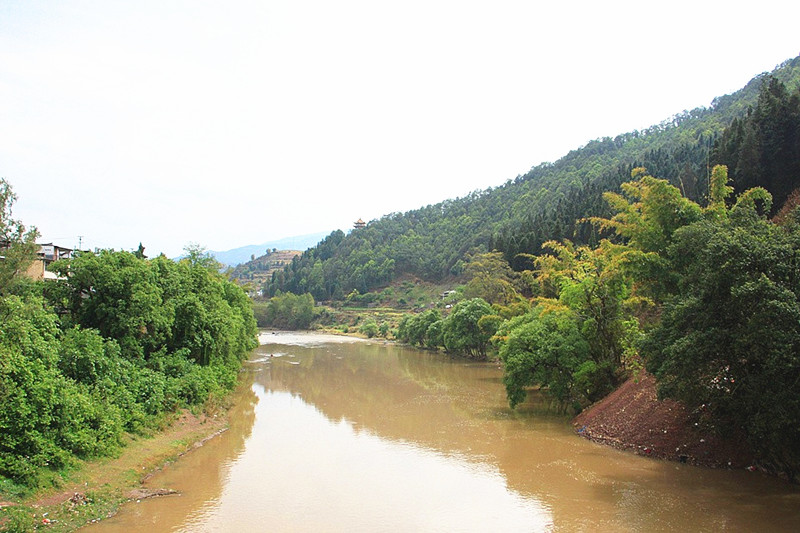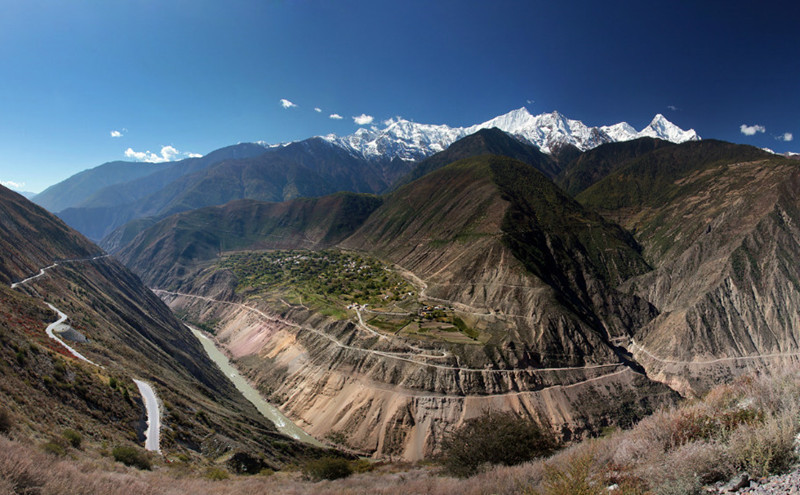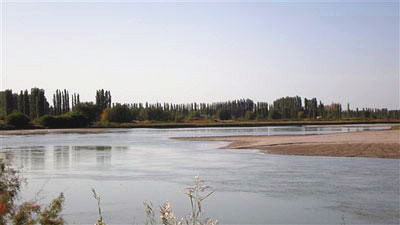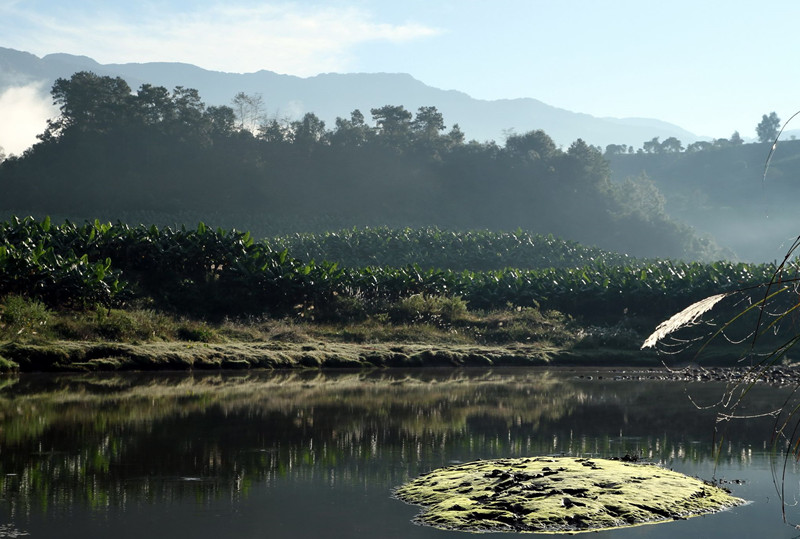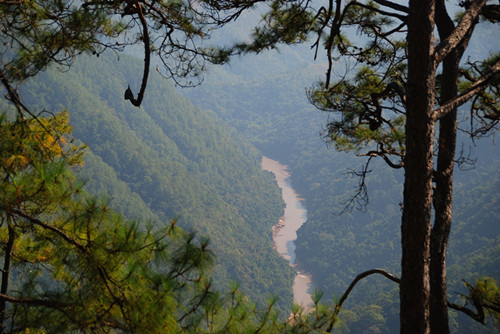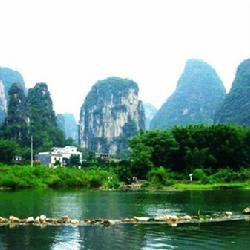
Lancang-Mekong River System
The reach of the upper reaches of Mekong River within China is named Lancang River. Lancang River is one of the biggest rivers in Southwest China, the longest river in Southeast Asia, the 4th longest river in Asia and the 9th longest river in the world. Mekong River flows through a number of countries, including Laos, Burma, Thailand, Cambodia and Vietnam. With the total drainage area of 810,000 square kilometers, Mekong River is hailed as the Danube in the East. In China, Lancang River flows through Qinghai, Tibet and Yunnan provinces with the total length of 2,179 kilometers. Within Yunnan Province, Lancang River is 1,247 kilometers long with the drainage area of 165,000 square kilometers. The river flows into Laos and Burma from Mengla County of Xishuangbanna Dai Autonomous Prefecture in Yunnan Province, becoming the boundary river of the 2 countries, which is named Mekong River.
Basic Information
| Chinese Name | 澜沧江-湄公河 |
| English Name | Lancang-Mekong River System |
| Continent | Asia |
| Geographical Location |
Originated from the Qinghai-Tibet Plateau of China, flowing from north to south through five countries of Southeast Asia, it flows into the South China Sea in Vietnam. |
| Countries the River Flows Through | China, Burma, Laos, Thailand, Cambodia, Vietnam |
| Drainage Area | 810,000 Square Kilometers |
| Length | 4909 Kilometers |
| Source |
Jinfu Mountain(吉富山), Zadoi County(杂多县), Qinghai Province, 5200 meters above sea level. |
| Source Altitude | 5200 Meters |
| Main Tributaries | Zhaqu River(扎曲), Angqu River(昂曲), Weiyuan River(威远江), Buyuan River(补远江), Liusha River(流沙河), Yangbi River(漾濞江), Tonle Sap River(洞里萨河) |
| Average Flow | 2140 Cubic Meters |
| Species | Yunnan snub-nosed monkey, Asian Elephant |
| Water Construction | Manwan(漫湾), Dachaoshan(大朝山), Jinghong(景洪) and Xiaowan(小湾) Hydropower Stations |
| Tourist Attractions | Jade Dragon Snow Mountain, Three Parallel Rivers, Xishuangbanna, Angkor Wat, Grand Palace in Bangkok. |
Location
Rising in the mountains of China’s Qinghai province near Tibet, it flows south. It forms the border between Laos and Myanmar (Burma), most of the border between Laos and Thailand, and moves across Cambodia and southern Vietnam into a rich delta which opens to the South China Sea.
Drainage Basin
The Lancang-Mekong River System can be divided into two parts: the “upper Lancang river basin” in Tibet of China, and the “lower Mekong basin” from Yunnan downstream from China to the South China Sea.
Upper Basin
From the point where it rises to its mouth, the most precipitous drop in the Mekong occurs in the upper Mekong basin, a stretch of some 2,200 kilometers. Here, it drops 4,500 meters before it enters the lower basin where the borders of Thailand, Laos, China, and Myanmar come together in the Golden Triangle.
The upper basin makes up 24 percent of the total area and contributes 15-20 percent of the water that flows into the Mekong River. The catchment here is steep and narrow. Soil erosion has been a major problem and approximately 50 percent of the sediment in the river comes from the upper basin.
In Yunnan Province in China, the river and its tributaries are confined by narrow, deep gorges. The tributary river systems in this part of the basin are small. In the south of Yunnan, in Simao and Xishuangbanna Prefecture, this river changes as the valley opens out, the floodplain becomes wider, and the river becomes wider and slower.
Lower Basin
Major tributary systems develop in the lower basin. These systems can be separated into two groups: tributaries that contribute to the major wet season flows, and tributaries that drain low relief regions of lower rainfall. The first group are left bank tributaries that drain the high rainfall areas of Laos. The second group are those on the right bank, mainly the Mun river(蒙河) and Chi River, that drain a large part of northeast Thailand.
Protected Areas in Lancang-Mekong River System
1. The headwaters of the Mekong in Zadoi County, Qinghai, China, are protected in Sanjiangyuan National Nature Reserve(三江源国家自然保护区). The name Sanjaingyuan means “the sources of the Three Rivers”. The reserve also includes the headwaters of the Yellow river and the Yangtze River.
2. The section of the river flowing through deep gorges in Yunnan Province is part of the Three Parallel Rivers of Yunnan Protected Areas and is a UNESCO world heritage site.
3. The Tonle Sap Biosphere Reserve in Cambodia contains the largest lake in Southeast Asia. It is a UNESCO Biosphere reserve.
Significance
The Mekong River, known as the Lancang in China, is the heart and soul of mainland Southeast Asia. Over 60 million people depend on the river and its tributaries for food, water, transport and many other aspects of their daily lives. The river supports one of the world’s most diverse fisheries, second only to Brazil’s Amazon River.
Unlike many major rivers in Asia, this river and its flood regime are relatively intact. As a result, the lower Mekong basin is the most productive river fishery in the world. Not surprisingly, the lower Mekong countries have some of the highest dependence on inland capture fisheries in the world.
Biodiversity
Lancang-Mekong River System is a rare biological treasure house in the world, with thousands of biological resources from the tropics to the cold and snow mountains area. With complex flora, the interlaced accumulation and mutual permeation of plants, it is the center of the variation of plants and a good breeding base for the introduction of new varieties. Precious, rare and unique species are various, there are a national protection animals, Yunnan golden monkey, Asian elephant, Indosinian tiger, wildebeest(牛羚), gibbon, bee monkey, hornbill, and so on; second class protected animals like pangolin, phayre’s leaf monkey(灰叶猴), Assamese macaque(熊猴), green peacock, etc. Plants include Taiwania flousiana(秃杉), hemlock(苏铁杉), georges fir(长苞冷杉), Chinese yew(红豆杉), black sandalwood(黑黄檀), and so on.
The basin is home to an amazing 1,200-1,700 fish species, the highest fish diversity in any basin after the Amazon and Congo. Sixty-two fish species are found nowhere else in the world. This river harbours more species of giant fish than any other on the Earth as well as the largest freshwater fish known to science, the Mekong Giant Catfish. There are over 160 known amphibian species, and 5 Ramsar wetlands of international significance.
Tourism
Cruising Lancang River, appreciating the scenery of Ganlan dam and feeling the rich custom and beauty of the Dai nationality villages are the highlights of touring Xishuangbanna. The flow path of Langcang River in Xishuangbanna is 158 kilometers. The cruise of Lancang River consists of 2 sections. The first section is from Jinghong to Tiger Leaping Rock, which boasts turbulent river water, changeful scenery, peculiar peaks, jagged rocks, various plants landscape and rare and precious animal ecology on both sides. The second tour section is cruising from Jinghong via Ganlan dam to the junction of China, Laos and Burma. The low-lying Ganlan dam features wet and hot climate, which boasts tropical sight, such as the verdant scenery throughout the year, Ficus altissima like umbrellas, coconut groves, bamboo towers of the Dai nationality, fernleaf hedge bamboos, jack fruits hanging on the branch, banana trees and cactus. Besides, women in bright-colored and gorgeous dresses get together from every household with bamboo baskets on their shoulders, who are just like a flock of peacocks rising and dancing in a happy mood.

 7 Days GolfingTour
7 Days GolfingTour
 8 Days Group Tour
8 Days Group Tour
 8 Days Yunnan Tour
8 Days Yunnan Tour
 7 Days Shangri La Hiking
7 Days Shangri La Hiking
 11 Days Yunnan Tour
11 Days Yunnan Tour
 6 Days Yuanyang Terraces
6 Days Yuanyang Terraces
 11 Days Yunnan Tour
11 Days Yunnan Tour
 8 Days South Yunnan
8 Days South Yunnan
 7 Days Tea Tour
7 Days Tea Tour
 8 Days Muslim Tour
8 Days Muslim Tour
 12 Days Self-Driving
12 Days Self-Driving
 4 Days Haba Climbing
4 Days Haba Climbing
 Tiger Leaping Gorge
Tiger Leaping Gorge
 Stone Forest
Stone Forest
 Yunnan-Tibet
Yunnan-Tibet
 Hani Rice Terraces
Hani Rice Terraces
 Kunming
Kunming
 Lijiang
Lijiang
 Shangri-la
Shangri-la
 Dali
Dali
 XishuangBanna
XishuangBanna
 Honghe
Honghe
 Kunming
Kunming
 Lijiang
Lijiang
 Shangri-la
Shangri-la
 Yuanyang Rice Terraces
Yuanyang Rice Terraces
 Nujiang
Nujiang
 XishuangBanna
XishuangBanna
 Spring City Golf
Spring City Golf
 Snow Mountain Golf
Snow Mountain Golf
 Stone Mountain Golf
Stone Mountain Golf
